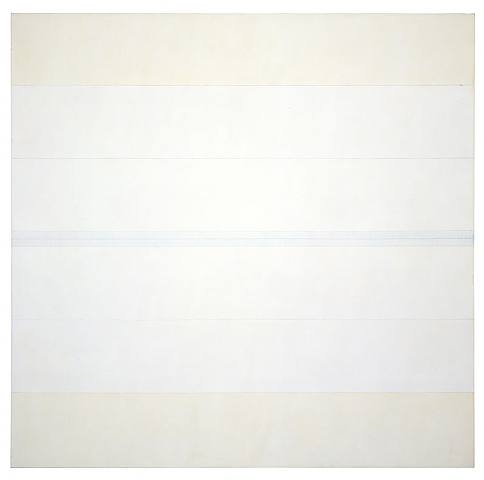Louise Bourgeois, Femme-Maison, C. 1946-47
This conflict was open to defiance in modernism. Louise Bourgeois created her paintings Femme-Maison to illustrate her personal identity as a woman. Chadwick assessed that Bourgeois indicated the home as "a place of conflict for the woman artist," but her critics interpreted the paintings as an affirmation linking women and home as "a 'natural' identification," (324). The painter exhibited surrealism within the imagery of the Femme-Maison paintings describing a woman's domesticity with homes that have blank facades and small windows replacing the head of the woman's body, On the one hand, this imagery defines women "but denies them speaking voices;" on the other, a critic's viewpoint in the 1940s would believe that the homes "prove" her domesticity, (Chadwick 324). Bourgeois wanted to demonstrate the tribulation of a woman's lack of attention of her work due to her constant domestic life in the home, yet the world in the 1940s viewed that point as a "natural" part of societal life.

Lee Krasner, Cat Image, 1957

The images of Abstract Expressionism in a great number of artists were influenced by the aspect of "nature," or the environment as a source. Krasner's Cat Image, for example, contained "pastel tones, foliate shapes, and egg forms [combined] with brushwork and aggressive loaded forms," (Chadwick 330). The details in paintings like Cat Image conveyed the "symbolic, mythic, and subjective content" in Abstract Expressionism, but the use of Abstract Expressionism began to decline by the end of the 1950s because of those three details being criticized as "rhetorical devices," (Chadwick 331). Nevertheless, the influence of Abstract Expressionism caused the younger generation of artists to start to detach themselves of making definite images in their paintings such as Untitled #9 by Agnes Martin and Winter Palace by Bridget Riley.
Agnes Martin, Untitled #9, 1990

Bridget Riley, Winter Palace, 1981

Dada-ism was an art movement denouncing many ideals and mocking the society of the bourgeois. It expressed contempt in consideration of social, political, and cultural regards. A well-known artist of Dada is Hannah Hoch. Her photos from media were the first to use the Dada mode, yet she was constantly being pushed away by men in the art industry. The men were considerably influenced by the style of Dada that they took up the style without crediting Hoch until she protested against them for recognition. On the subject of the men during her time, Hoch stated, "It was not very easy for a woman to impose herself as a modern artist in Germany... Most of our male colleagues continued for a long time to look upon us as charming and gifted amateurs, denying us implicitly any real professional status," (Guerrilla Girls 67). Hoch also stated that the men "all desired this 'new woman' and her groundbreaking will to freedom. But they more or less brutally rejected the notion that they, too, had to adopt new attitudes," (Guerrilla Girls 67). In other words, the difficulty for a female artist to progress in life was shown as a male artist expressed how the content of the woman's work of art was not considered professional in spite of the talent and effort put into it. The belief that a woman's work was considered not as proficient as a man's still lingered in a male-dominated era. The men understood the talent of Hannah Hoch, but were unable to admit the fact of adopting her new artistic ideas because of that belief. Additionally, this exemplifies German Expressionism, saying the thought that the way of modernism "followed function" and that "women should follow men," (Guerrilla Girls 59).
In conclusion, modernism allowed many female artists express their opinions to criticize the social, political, and cultural values by means of art. Artists including Hannah Hoch and Louise Bourgeois had their artistic works being affected by the male-dominated notion that the quality of a woman's art work was lower than a man's art work. Men viewed this notion as natural in society during the early twentieth century. As the women artists struggled arduously to challenge the general belief, they allowed the world to slowly notice them in retrospect, enabling society to observe the adversities that they encountered to attain attention.
Work Cited:
Chadwick, Whitney. Women, Art, and Society. Fifth Edition. New York: Penguin, 2002. Print.
Guerrilla Girls. The Guerrilla Girls' Bedside Companion to the History of Western Art. New York: Penguin, 1998. Print.
Work Cited:
Chadwick, Whitney. Women, Art, and Society. Fifth Edition. New York: Penguin, 2002. Print.
Guerrilla Girls. The Guerrilla Girls' Bedside Companion to the History of Western Art. New York: Penguin, 1998. Print.

No comments:
Post a Comment